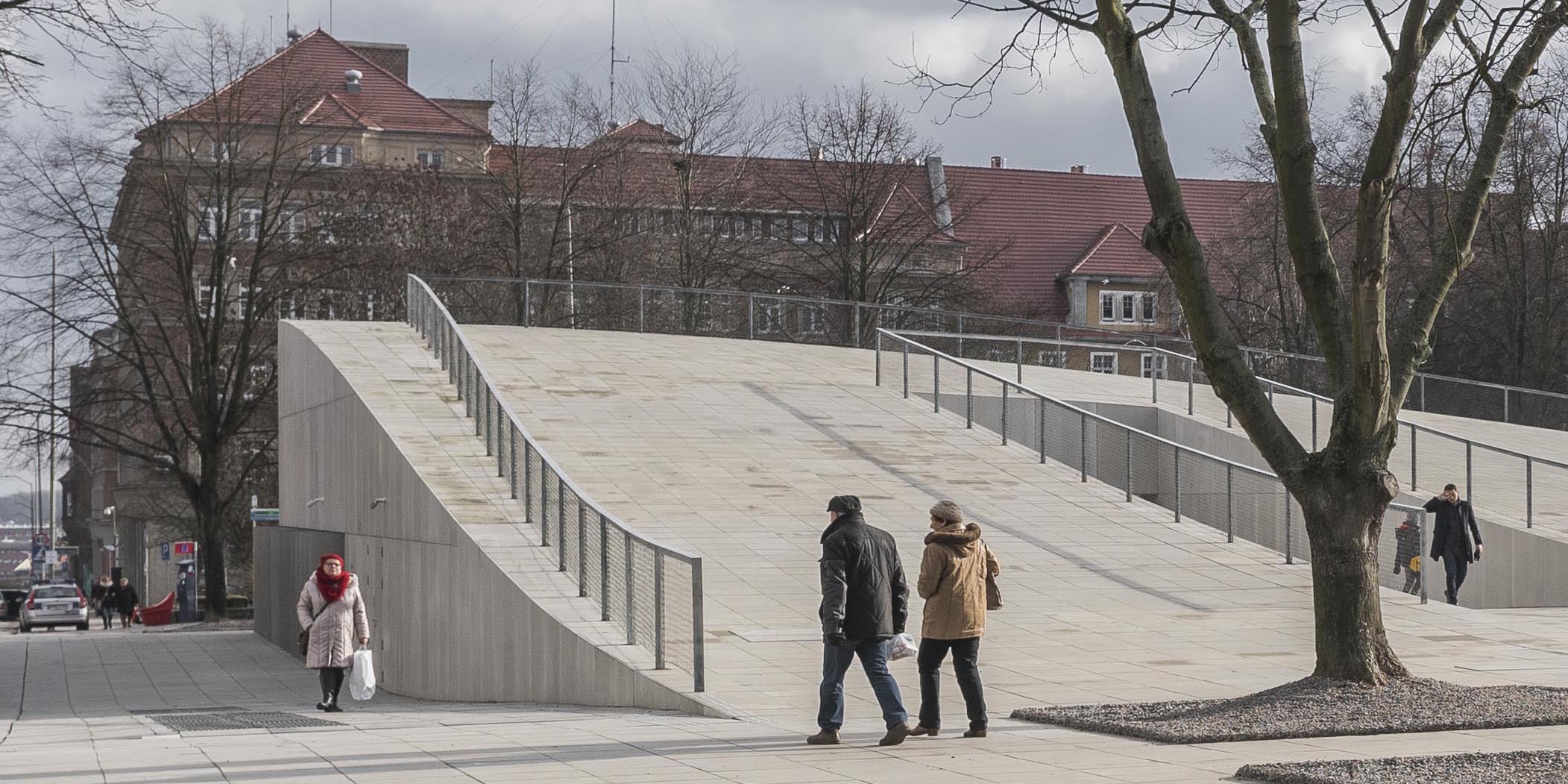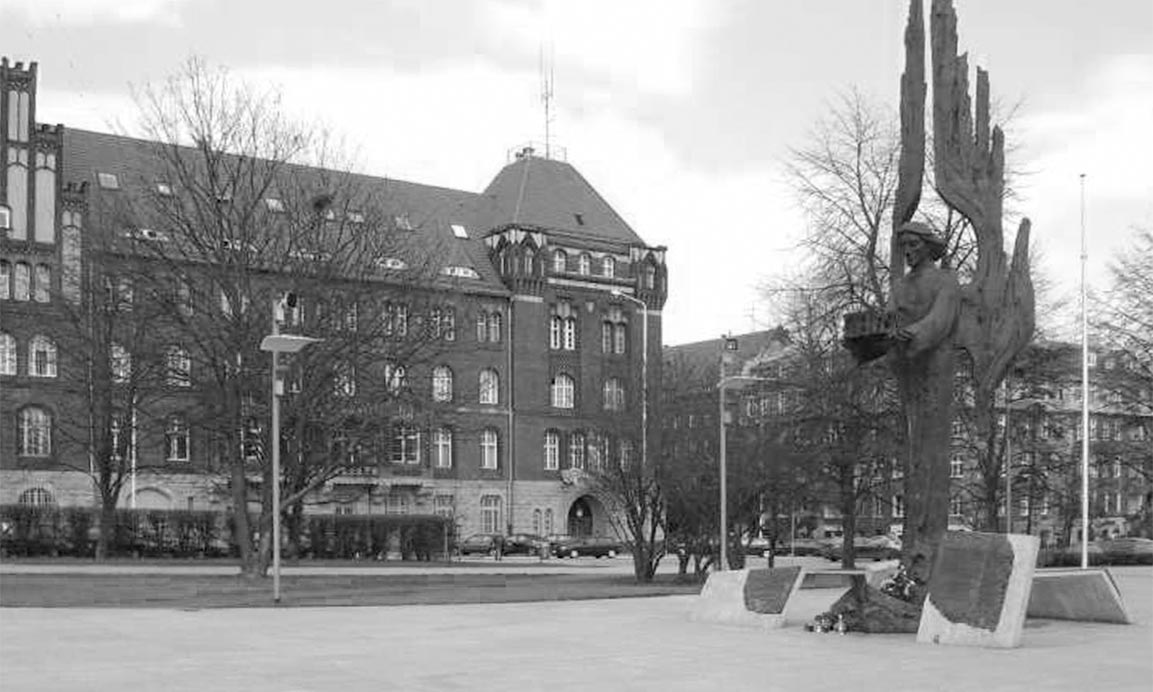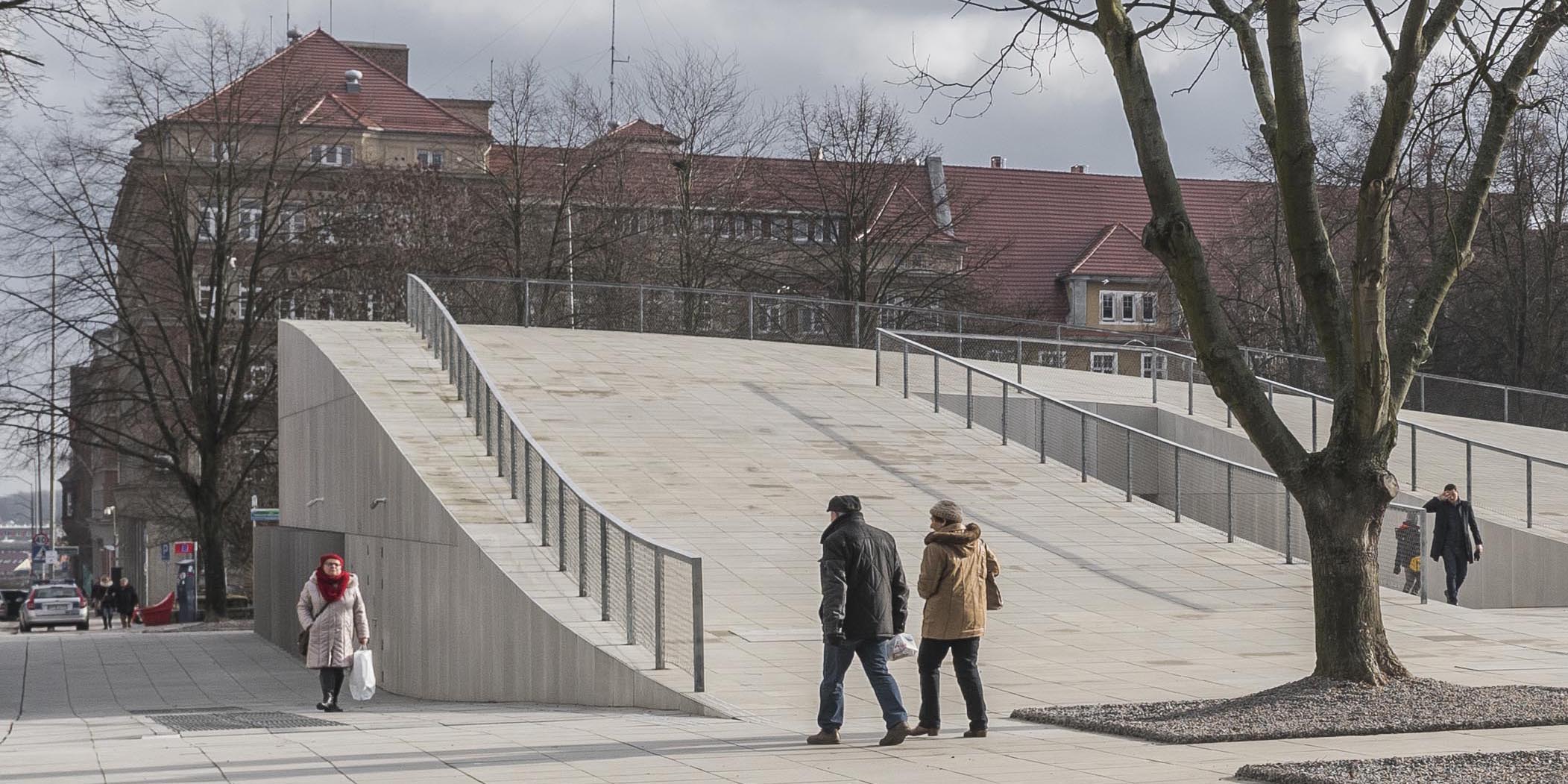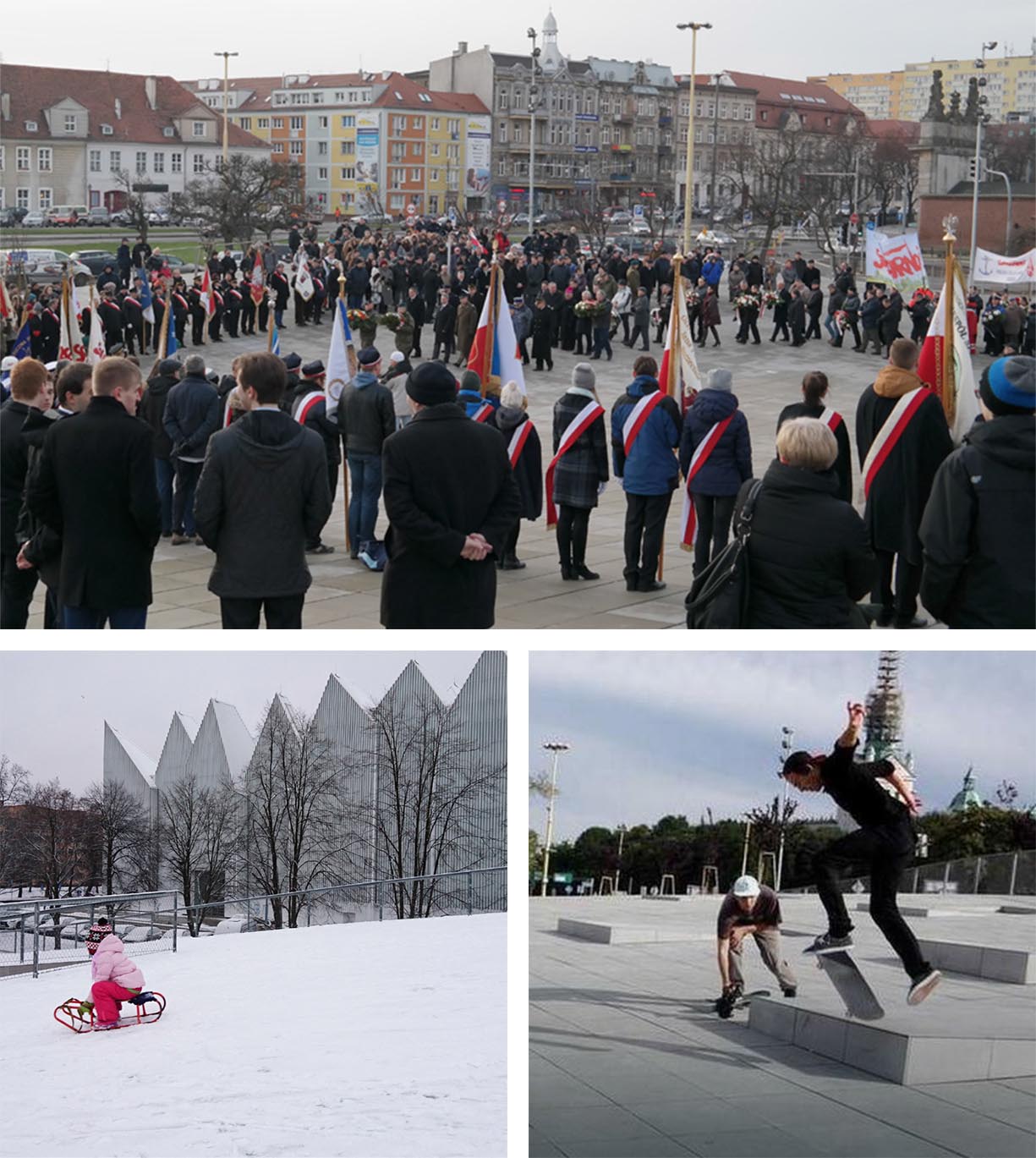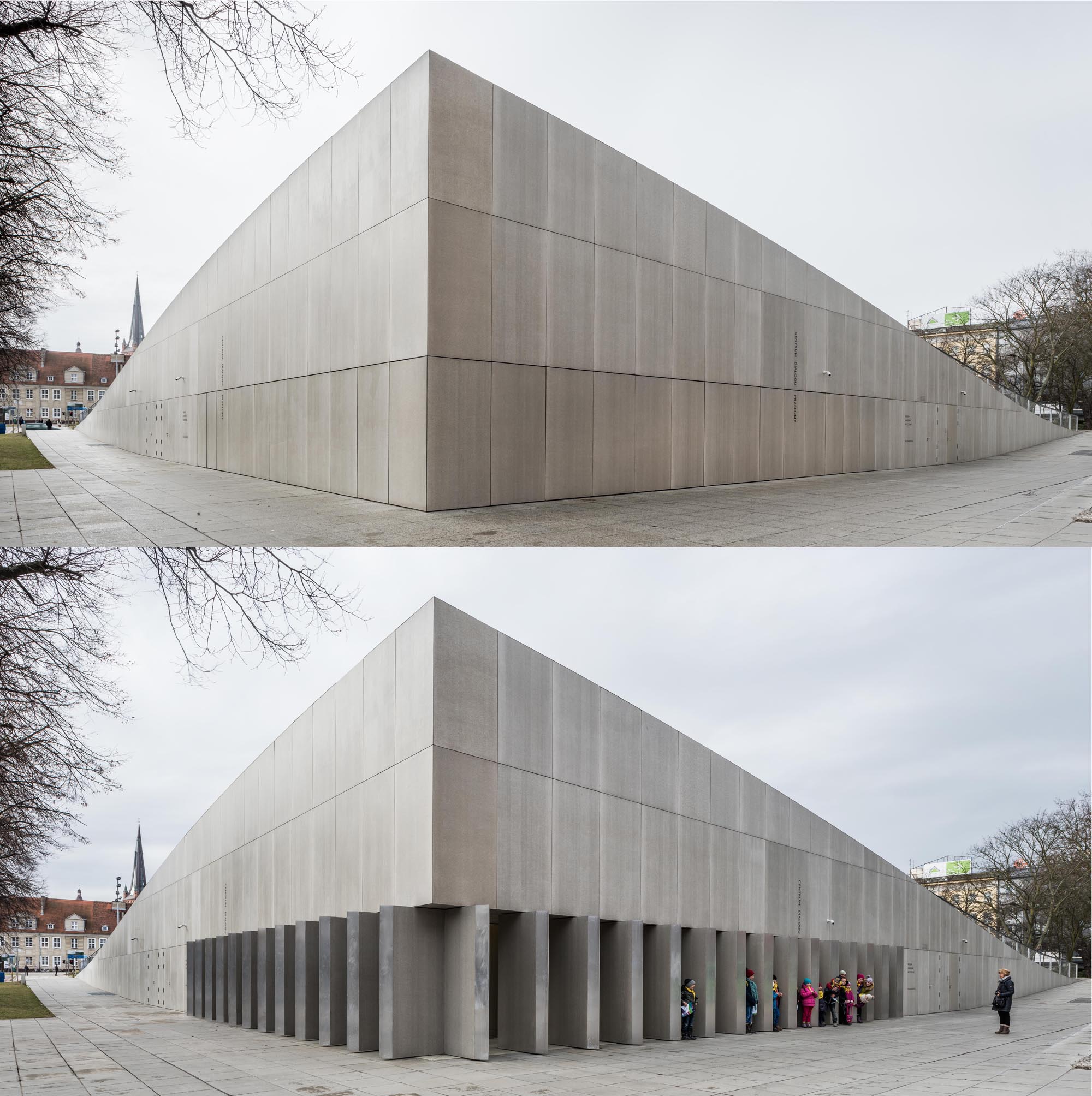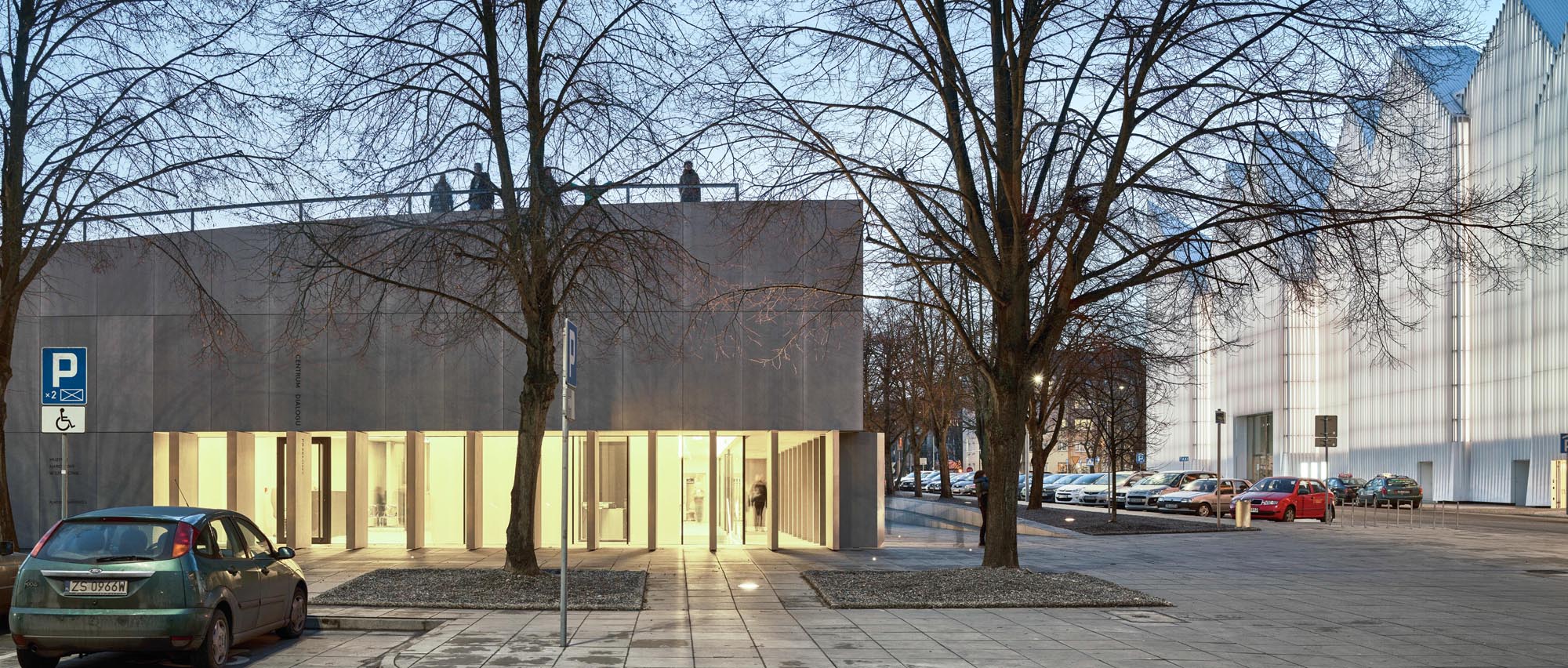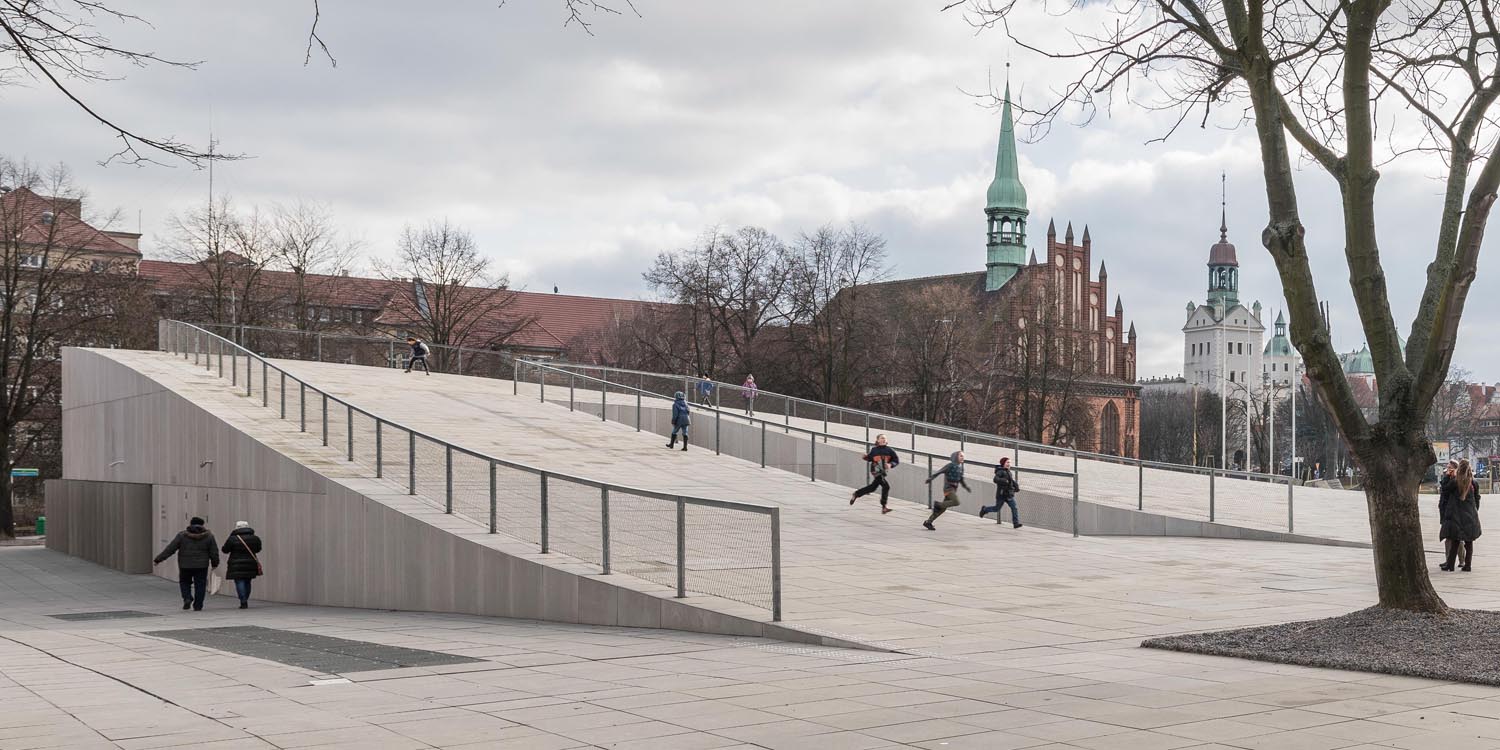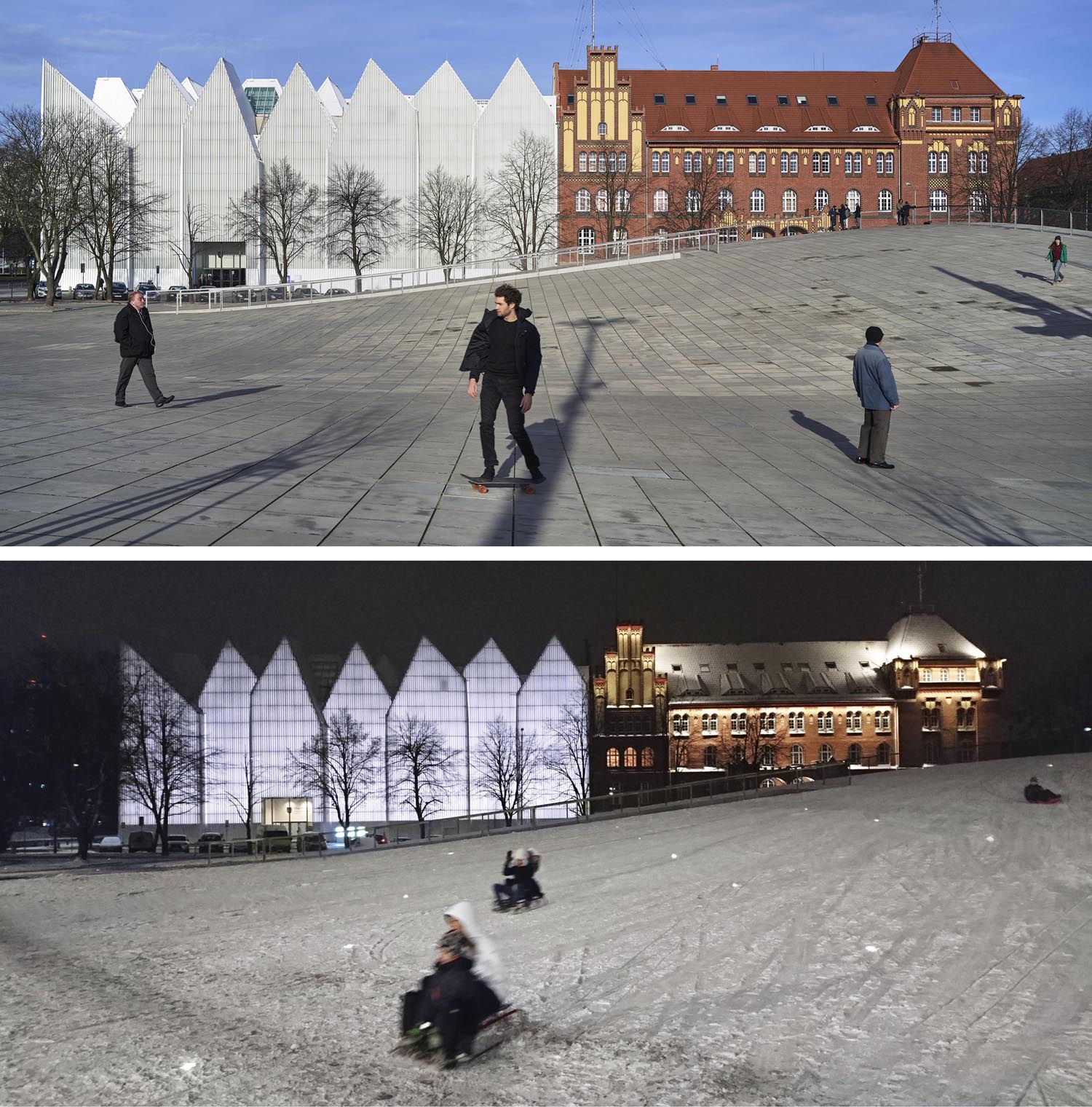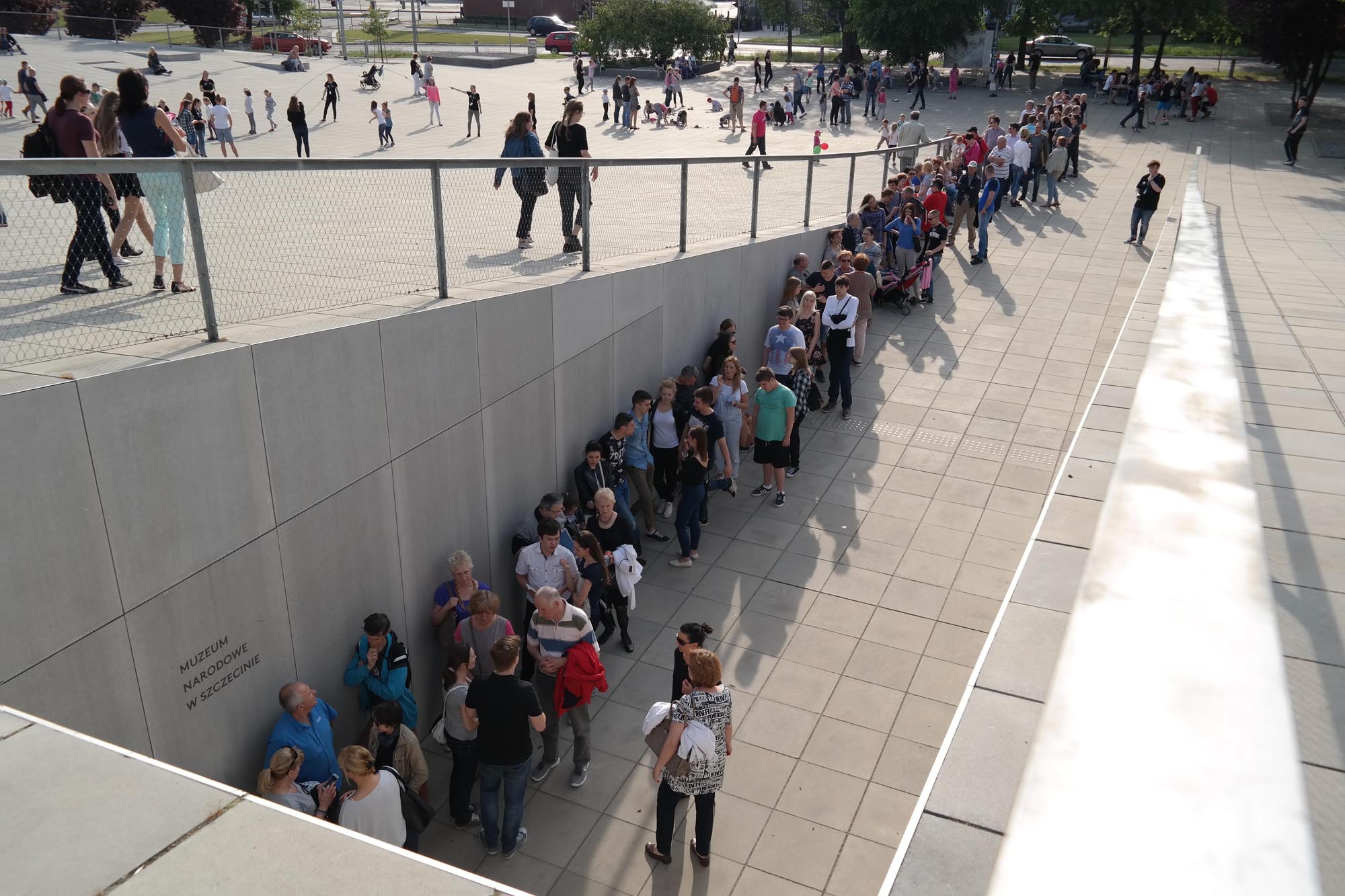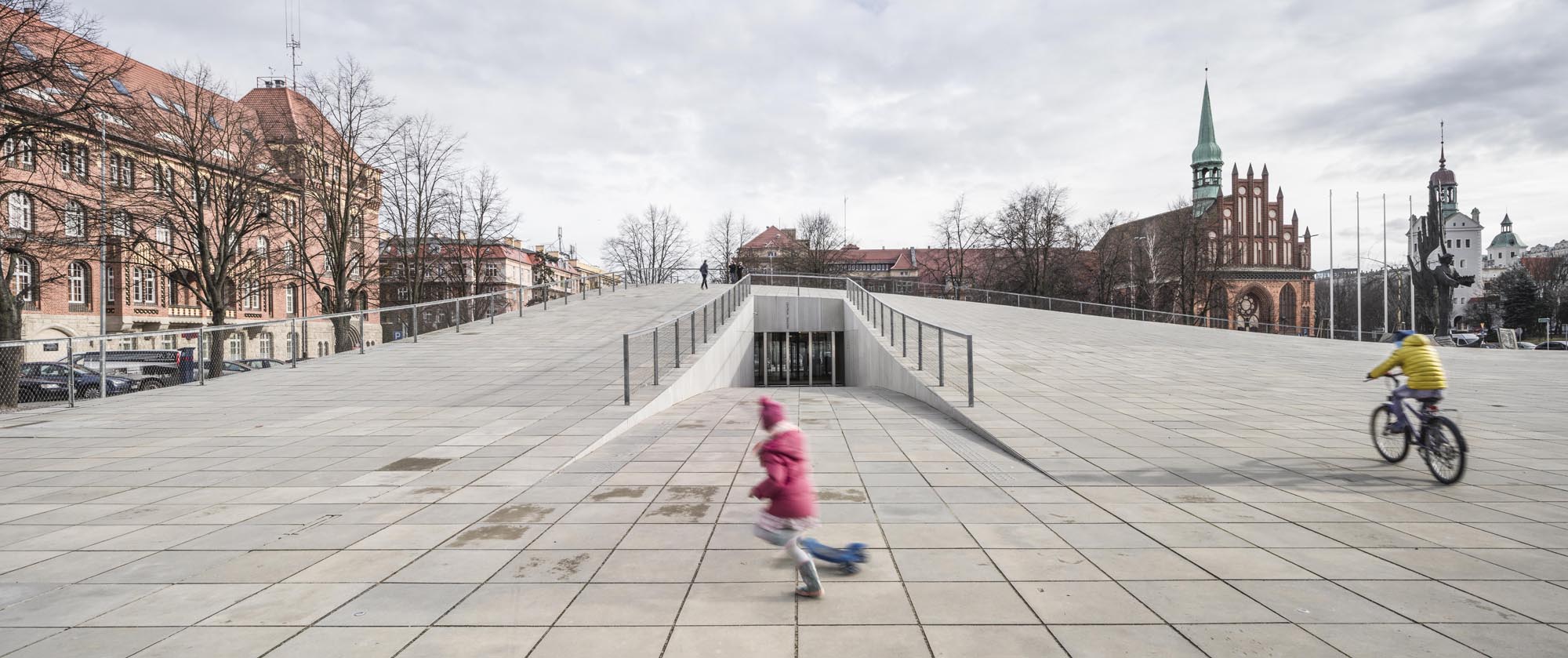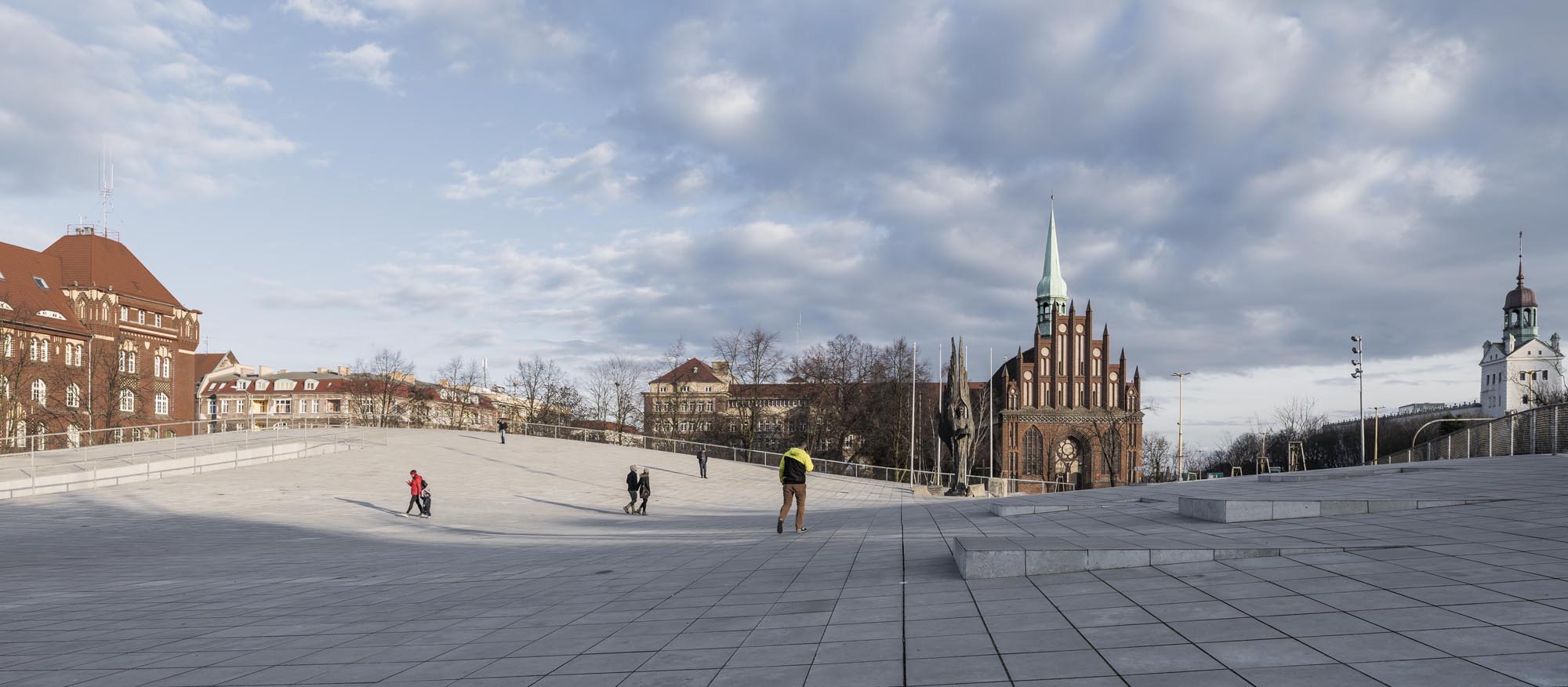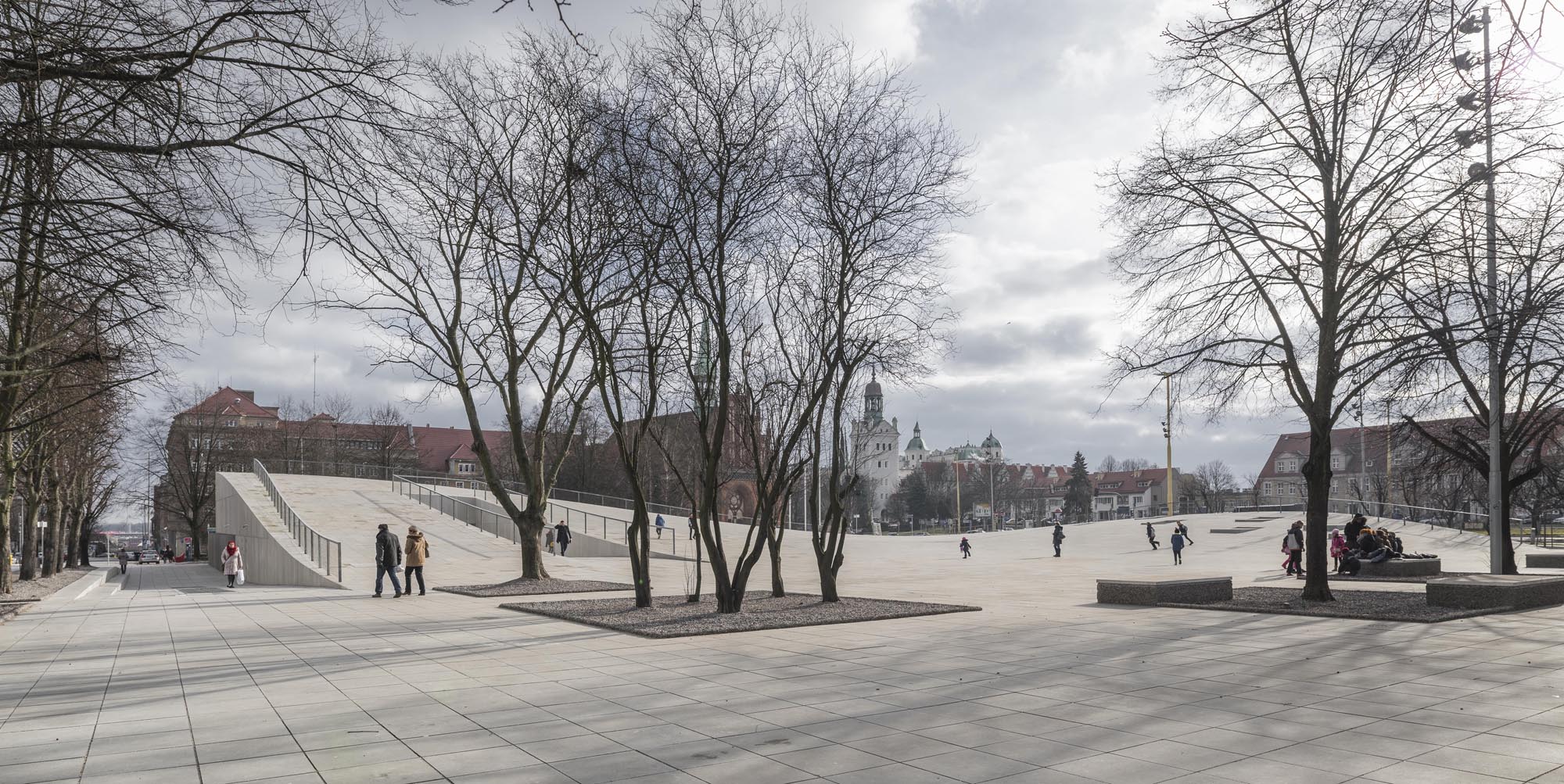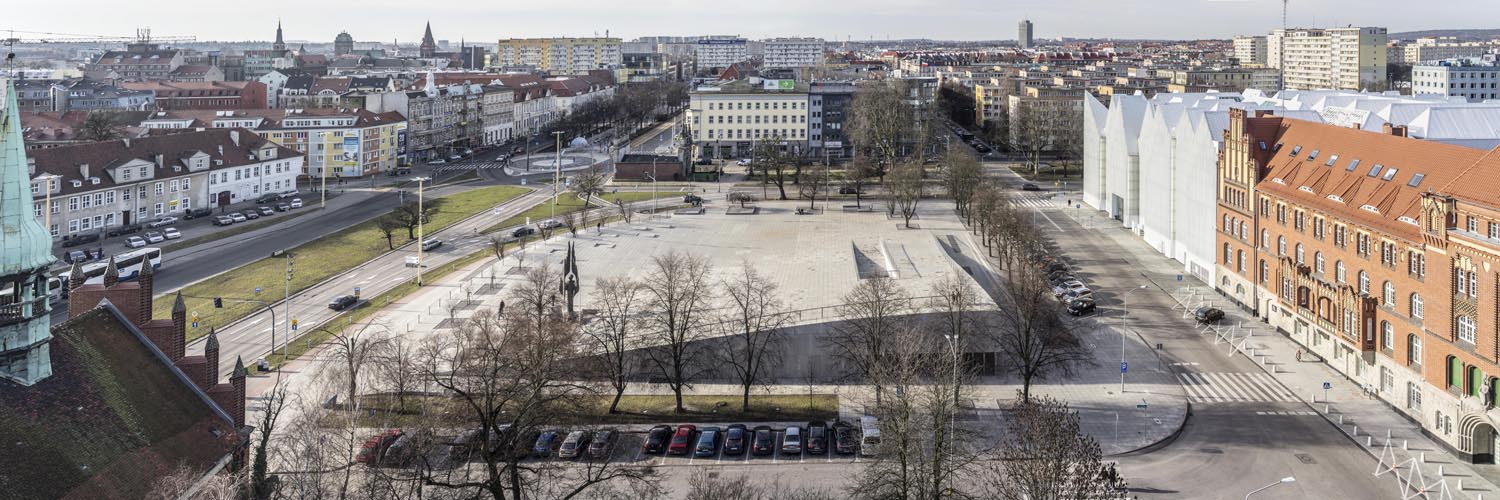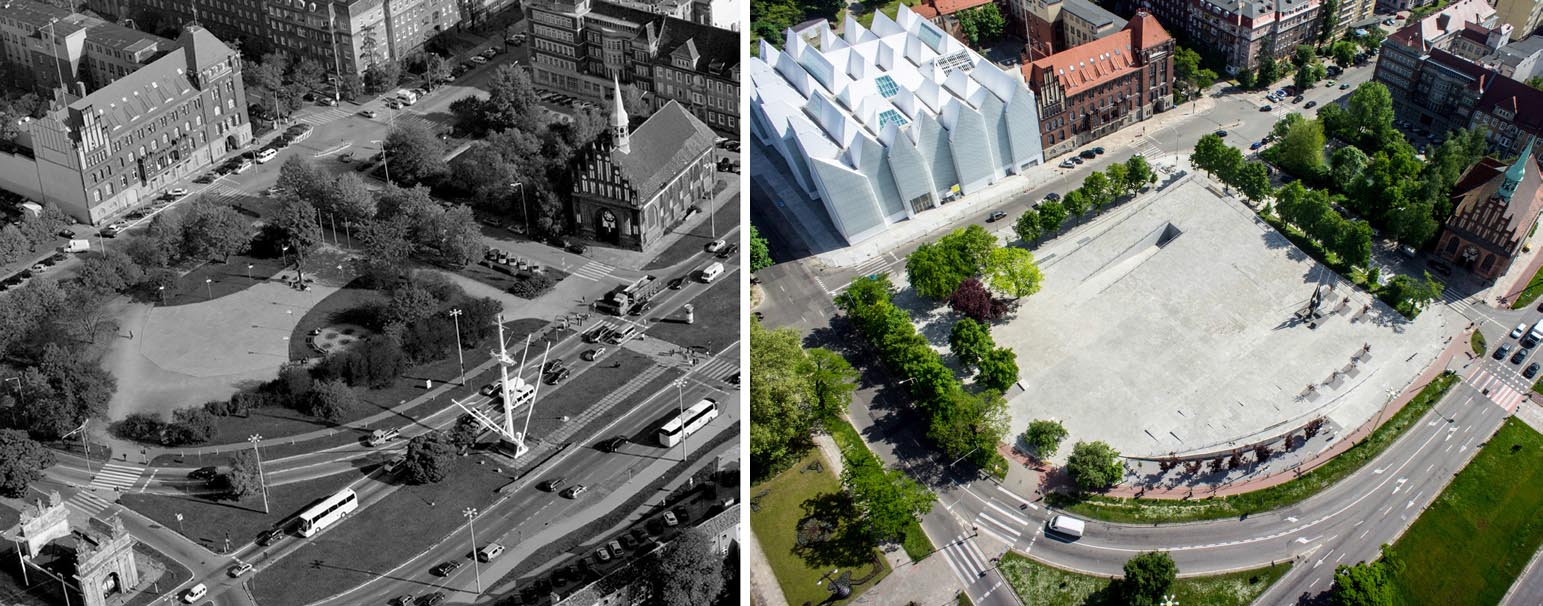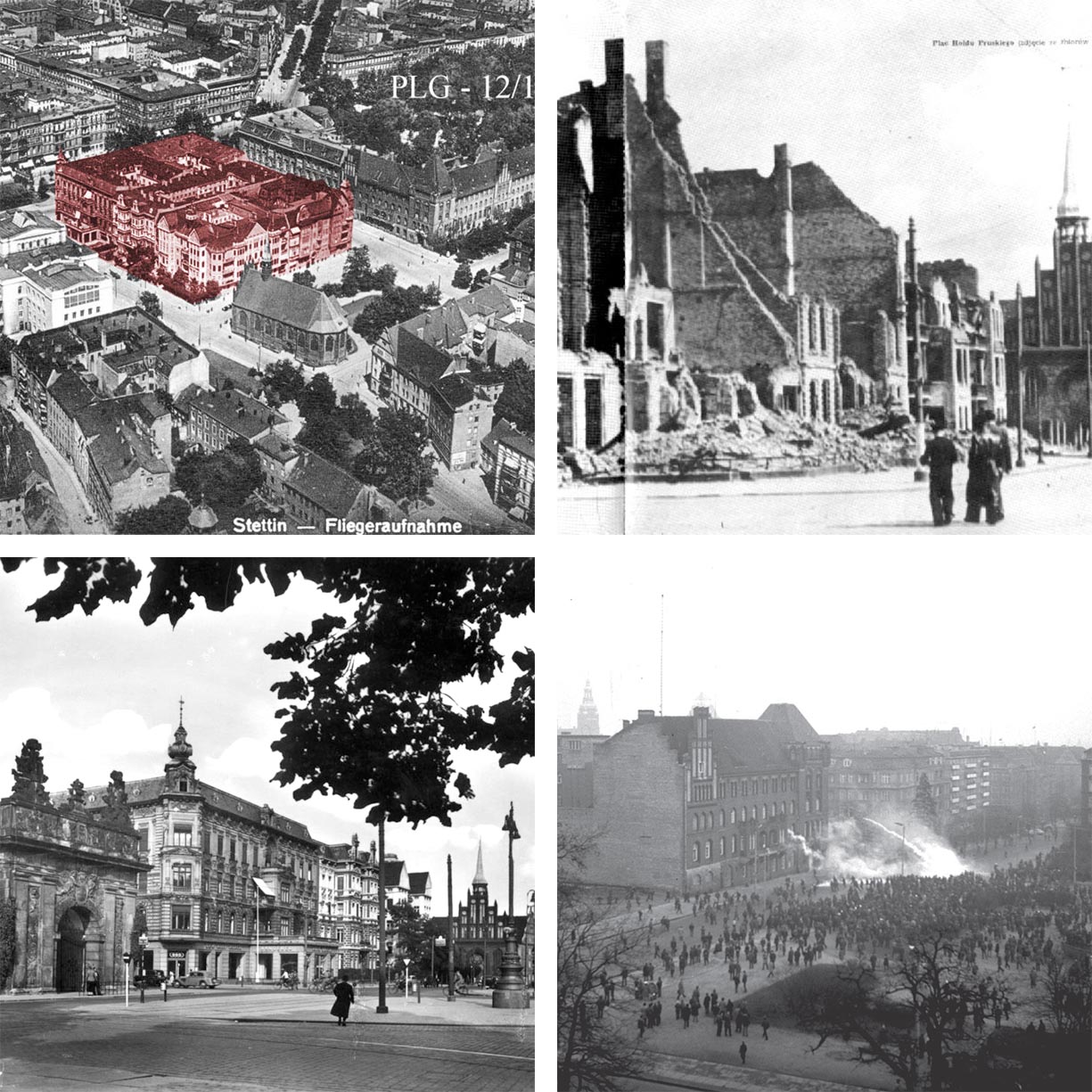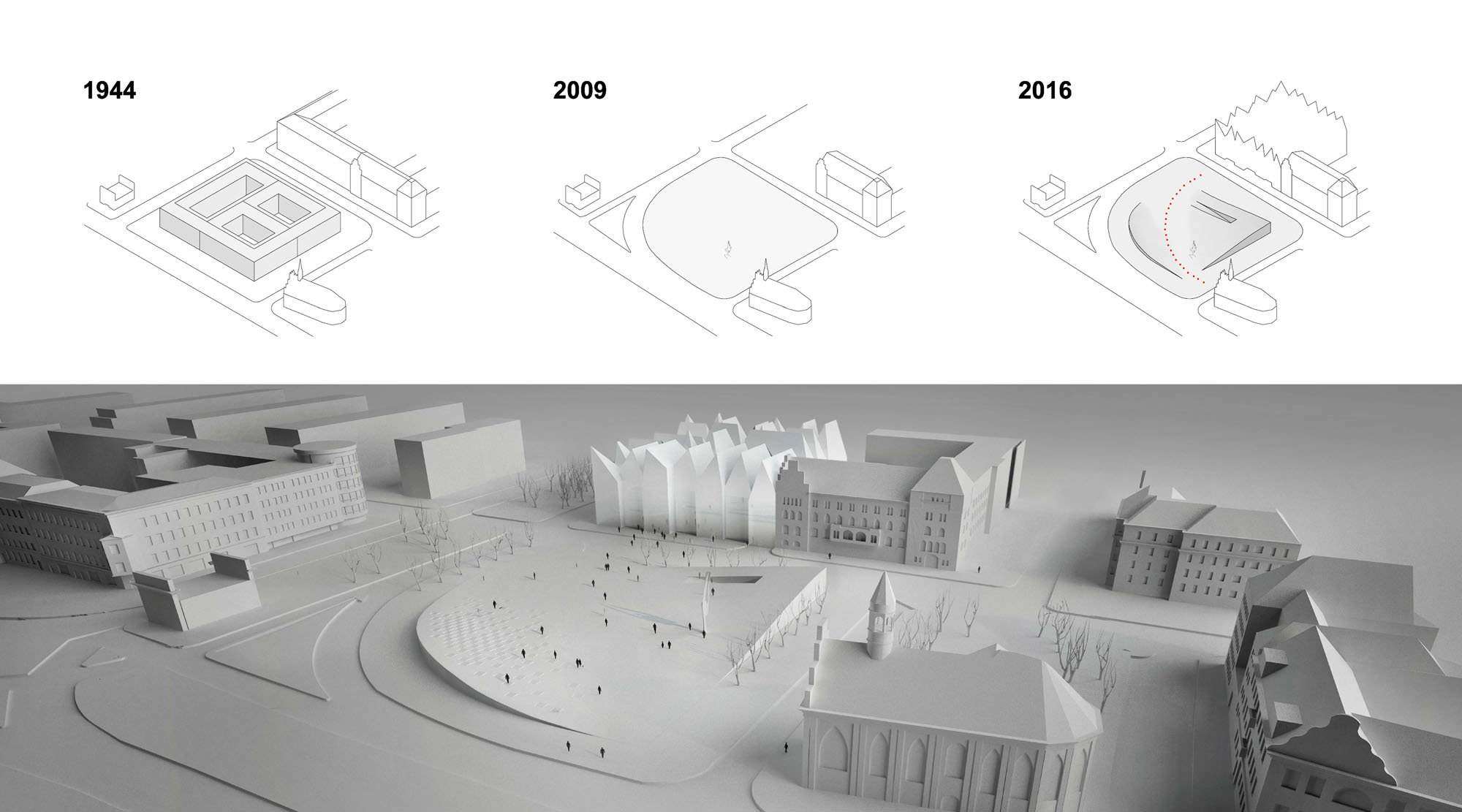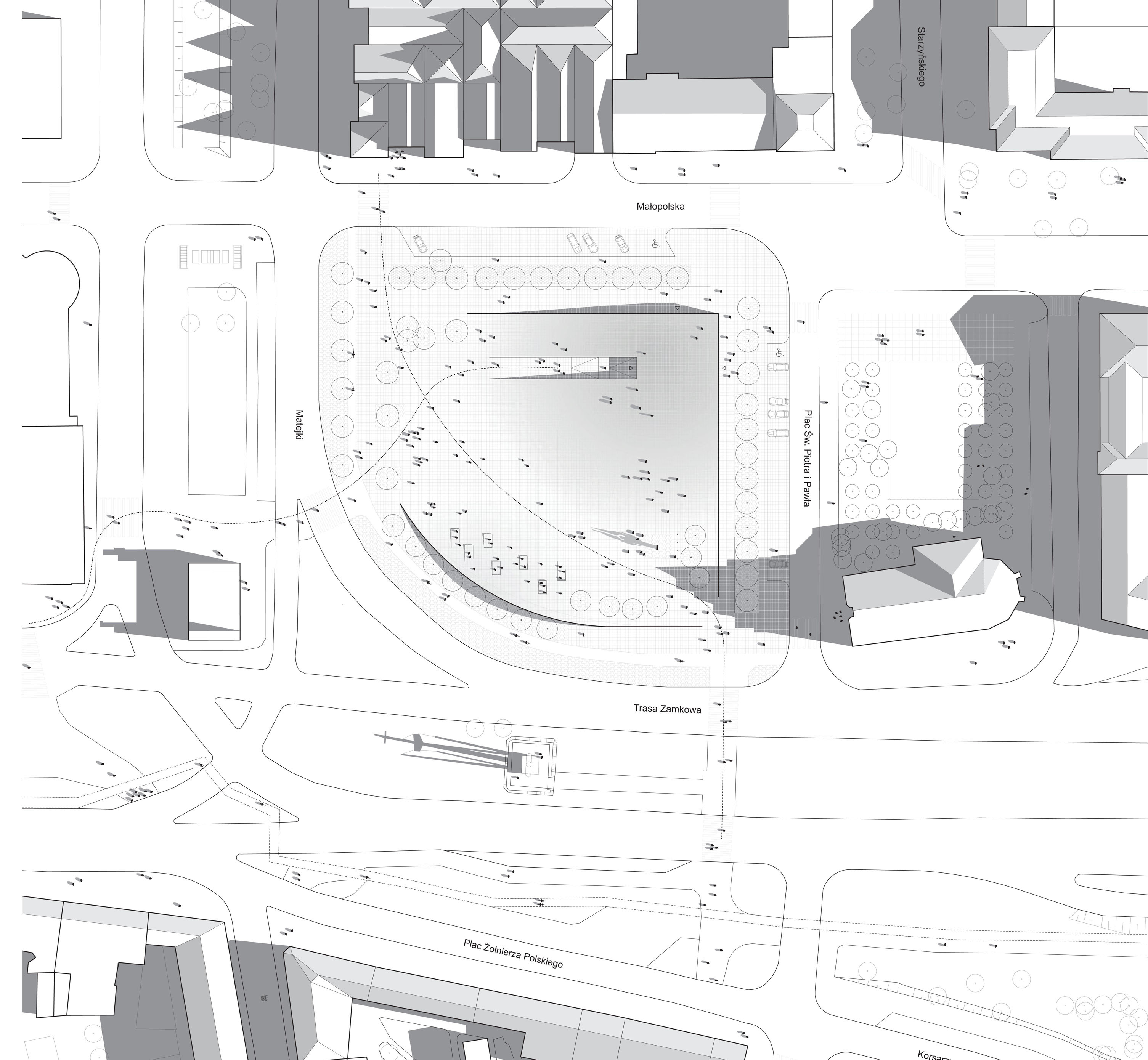Previous state
At the end of the Second World War when the Potsdam Conference (1945) pushed back the German border, part of the region of Western Pomerania remained in Polish territory. The German inhabitants were deported and quickly replaced by new Polish settlers. For decades, Szczecin, the capital of the region, suffered from this uprooting and the ripping apart of its social fabric, a situation aggravated by the fact that, thanks to Soviet censorship, the people were denied a rigorous history of what had actually happened. This memory hole was accompanied by the testimony of numerous physical holes left in the city centre by allied aerial bombing attacks. What had once been a densely-populated, vibrant urban zone was turned into a pockmarked territory which Soviet architecture continued to ill-treat by opening up new motorways, putting up crude constructions of hefty concrete blocks and neglecting the city’s many desolate, empty lots.
One of these, the result of the destruction of a housing block just opposite the Konzerthaus (Concert Hall), which was also demolished, took on sudden symbolic relevance in December 1970. This space, next to the provincial headquarters of the communist party, was the scene of a workers’ demonstration which the authorities brutally crushed with a toll of sixteen dead and about a hundred wounded. The tragedy was the reason why, once the Soviet regime had fallen, the place was named Solidarność (Solidarity) Square in reference to the Polish independent labour union which had been a driving force in the struggles for freedom. The frequency with which demonstrations were held in memory of the victims eventually led the authorities to install in 2005 a monument showing the names of the sixteen dead at the foot of a sculpture called “Angel of Freedom”. Yet, despite the symbolic importance of the place, Solidarity Square continued to be unwelcoming, bereft of any everyday activity except for commemorative events, with indistinct boundaries and flanked by a road that was congested with traffic.
Aim of the intervention
In view of this situation, a few years after installing the monument the Szczecin City Council decided to endow the square with new uses and complementary attractions. As a result of this decision, the site where the Konzerthaus had once stood looking onto the square is now home to the new Szczecin Philharmonic Hall, a building which became very well-known after it received the European Prize for Contemporary Architecture (Mies van del Rohe Award), so much so that it soon became a new icon for the city.
It was also decided that, together with this new focus of cultural activity, the square should also be the site of the “Przełomy” Centre for Dialogue, a branch of the National Museum of Szczecin. The new building, constructed on municipal land and financed by the government of the Western Pomeranian Voivodeship (Province) is tasked with ending the officially imposed oblivion which, after the Second World War, stripped Szczecin and the whole region of their history. However, in addition to filling this memory hole, the new museum provided an opportunity to put an end to the ambiguity of the empty urban space which had not yet found a solution to the matter of its transition between built-up area and public space.
Description
The new “Przełomy” Centre for Dialogue is partly underground and located in the very centre of Solidarity square. It has two subterranean floors which house a permanent exhibition on the recent history of Szczecin, as well as spaces which are especially fitted out as venues for temporary exhibitions, conferences, debates, educational workshops and commemorative events. The museum’s roof has gently sloping sides which constitute the ground of the new square. Hence the built-up volume only emerges in the north-eastern corner of the square where, at a crossroads between two streets, it offers a conventional urban façade in which the exit doors of the museum are located.
The south-western edge of the square, which is curved, also rises above street level in order to protect the space from traffic noise from the motorway running along that side. The two sloping edges gently converge from diagonally opposite points to meet near the centre of the square, which is now sheltered despite the gaps in its urban facades. A downwards-slanting ramp set at an angle to the gradient of the square is located in the central dip giving access to the museum. This central zone, at ground level, respects the diagonal route taken by most pedestrians and cyclists when crossing the square before it was renovated. The pre-existing trees on the north-western quarter just in front of the Philharmonic Hall were also conserved and, in the opposite quarter the Angel of Freedom still stands.
Assessment
The “Przełomy” Centre for Dialogue is one of an emerging type of buildings which opt to make their sloping roofs available as public space. Frequently, a sterile form of Mannerism hides behind this apparently generous gesture which ends up diluting the desirable compactness of an urban zone or being an obstacle to its continuity. In the case of Szczecin, however, this hybrid uniting of closed building and open space has made it possible to reconcile past and present. Now, the act of remembering and the everyday business of living are superimposed in underground and aboveground levels to fill an absence of memory in the social fabric and an absence of activity in the urban fabric. The city, afflicted by both traumatic memories and unjustifiable oblivion, urgently needed to reconstruct the foundations of its identity. Meanwhile, the inviting slopes of Solidarity Square, which attract sleds in the winter and skateboards in the summer, constitute two amphitheatres from which to contemplate the spectacle of the comings and goings of daily life.
David Bravo │ Translation by Julie Wark
Musem and Square in Szczecin (Poland). JOINT WINNER. European Prize for Urban Public Space 2016 (English) from CCCB on Vimeo.
[Last update: 26/05/2022]


